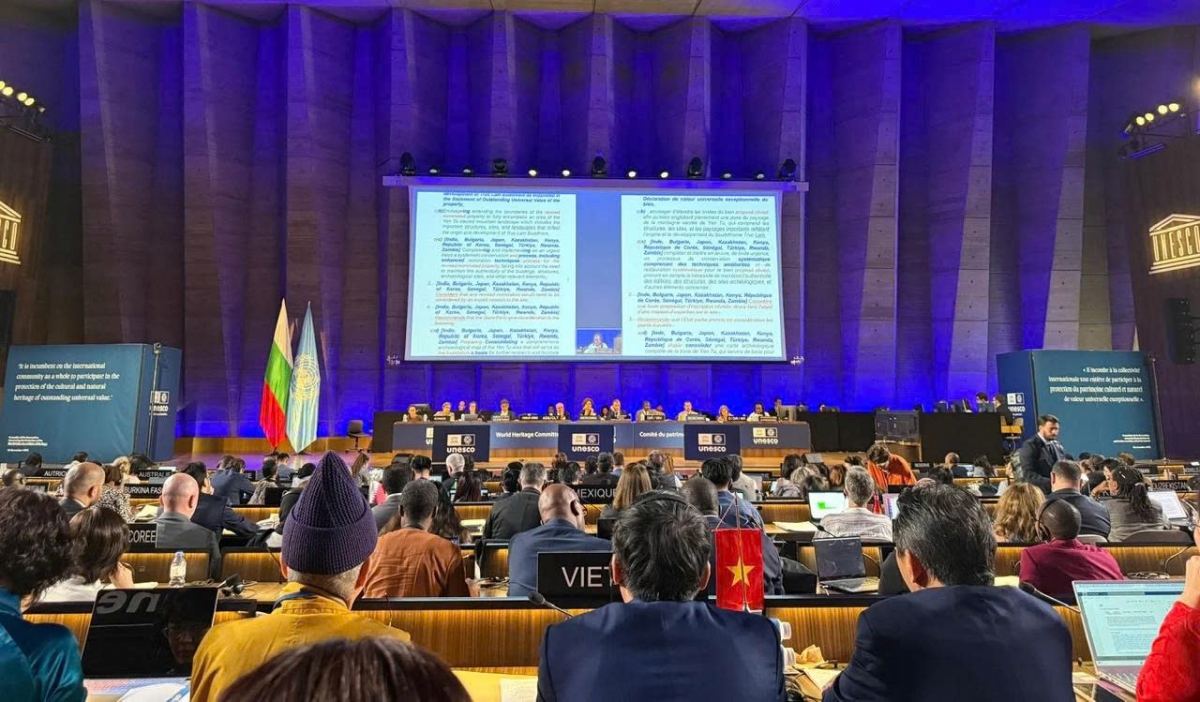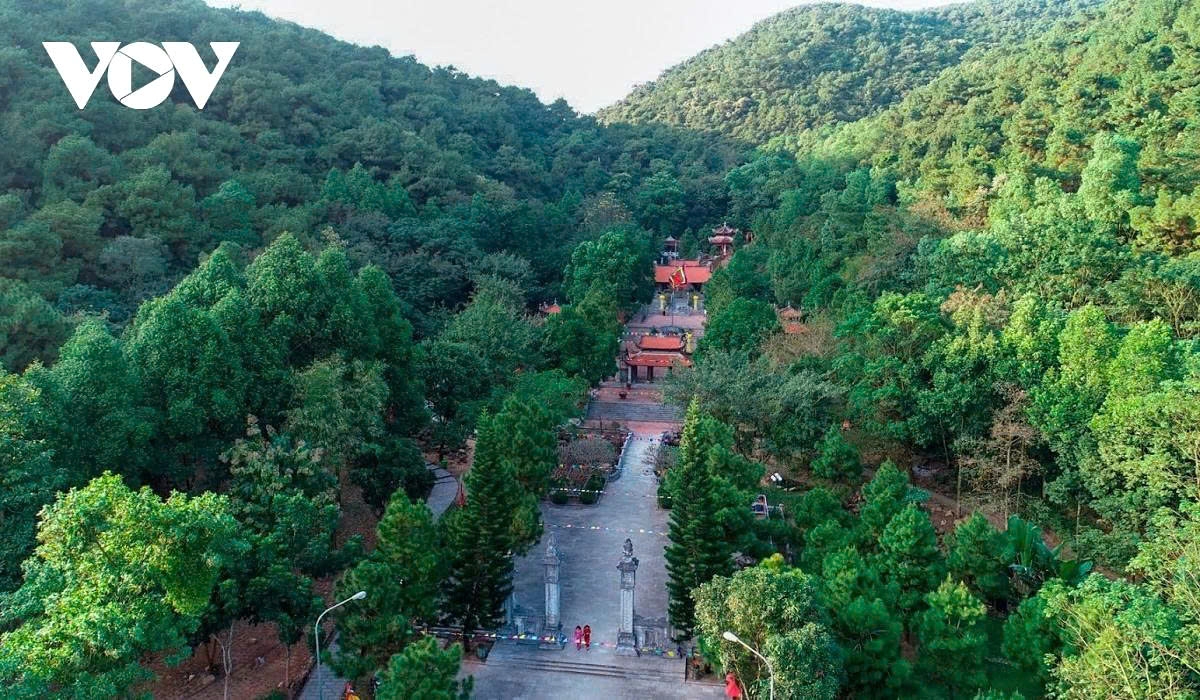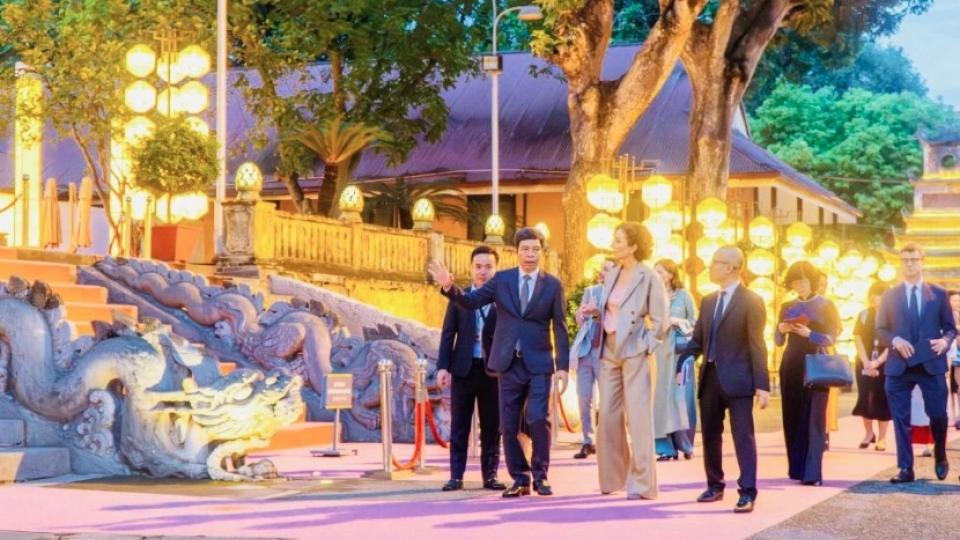A Vietnamese relic and scenic complex honoured as UNESCO World Cultural Heritage Site
VOV.VN - The UNESCO World Heritage Committee has recognised the Yen Tu – Vinh Nghiem, Con Son, Kiep Bac Complex spanning three localities - Quang Ninh, Bac Ninh, and Hai Phong – as a World Cultural Heritage Site.

Professor Nikolay Nenov, president of the 47th session of the UNESCO World Heritage Committee, struck the gavel to announce the inscription of the relic and landscape complex as a World Cultural Heritage Site, during its 47th session in Paris on July 12.
This marks Vietnam’s 9th UNESCO World Heritage Site, and notably, the second trans-provincial heritage site after Ha Long Bay – Cat Ba Archipelago, which spans Quang Ninh province and Hai Phong city.
The Yen Tu - Vinh Nghiem, Con Son, Kiep Bac Complex stands as a unique and extraordinary testimony to Truc Lam Zen Buddhism – a distinctive Vietnamese Buddhist tradition founded in the 13th century by the Tran dynasty kings, especially King-Monk Tran Nhan Tong.
The complex comprises many nationally and specially recognised historical sites, including Yen Tu Monuments and Landscape Complex, Tran Dynasty Historical Site, Vinh Nghiem Pagoda, Bo Da Pagoda, Con Son – Kiep Bac Historical Site, and An Phu – Kinh Chu – Nham Duong Scenic and Historical Site.
It also encompasses Thanh Mai Pagoda, numerous artifacts, national treasures, intangible heritage, traditional festivals, and the rich natural landscape of the Yen Tu – Vinh Nghiem – Con Son – Kiep Bac cultural space.
The 12 heritage clusters of this complex fully illustrate the spiritual lineage and philosophy of Truc Lam Buddhism – from its founding at the sacred Yen Tu Mountain to its systematic teachings inscribed in stele inscriptions, rituals, and religious artifacts.

Nguyen Thi Hanh, vice chairwoman of the Quang Ninh Provincial People’s Committee and head of the heritage nomination task force, said that after years of constant effort, the site has finally been globally recognised. She emphasised that Quang Ninh would continue implementing preservation and restoration plans to ensure sustainable development and global promotion of this exceptional heritage.
In their remarks, Permanent Deputy Minister of Foreign Affairs Nguyen Minh Vu and Deputy Minister of Culture, Sports and Tourism Hoang Dao Cuong stressed that the nomination is the result of many years of commitment to conserving cultural heritage at both tangible and intangible levels.
The ministries, together with provincial authorities, have undertaken numerous restoration projects, academic research, and international cooperation to successfully identify, preserve, and promote Vietnamese heritage sites.
The UNESCO recognition of the Yen Tu – Vinh Nghiem, Con Son, Kiep Bac Complex affirms the persistent efforts, unified commitment, and effective collaboration between local and central governments, international partners, and the Vietnamese people in safeguarding the nation’s spiritual and cultural treasures.
Previously, UNESCO had inscribed eight World Heritage Sites in Vietnam, namely Phong Nha – Ke Bang National Park; Imperial Citadel of Thang Long – Hanoi; Trang An Landscape Complex; Hoi An Ancient Town; My Son Sanctuary; Citadel of the Ho Dynasty; Ha Long Bay – Cat Ba Archipelago; and Hue Monuments Complex.





